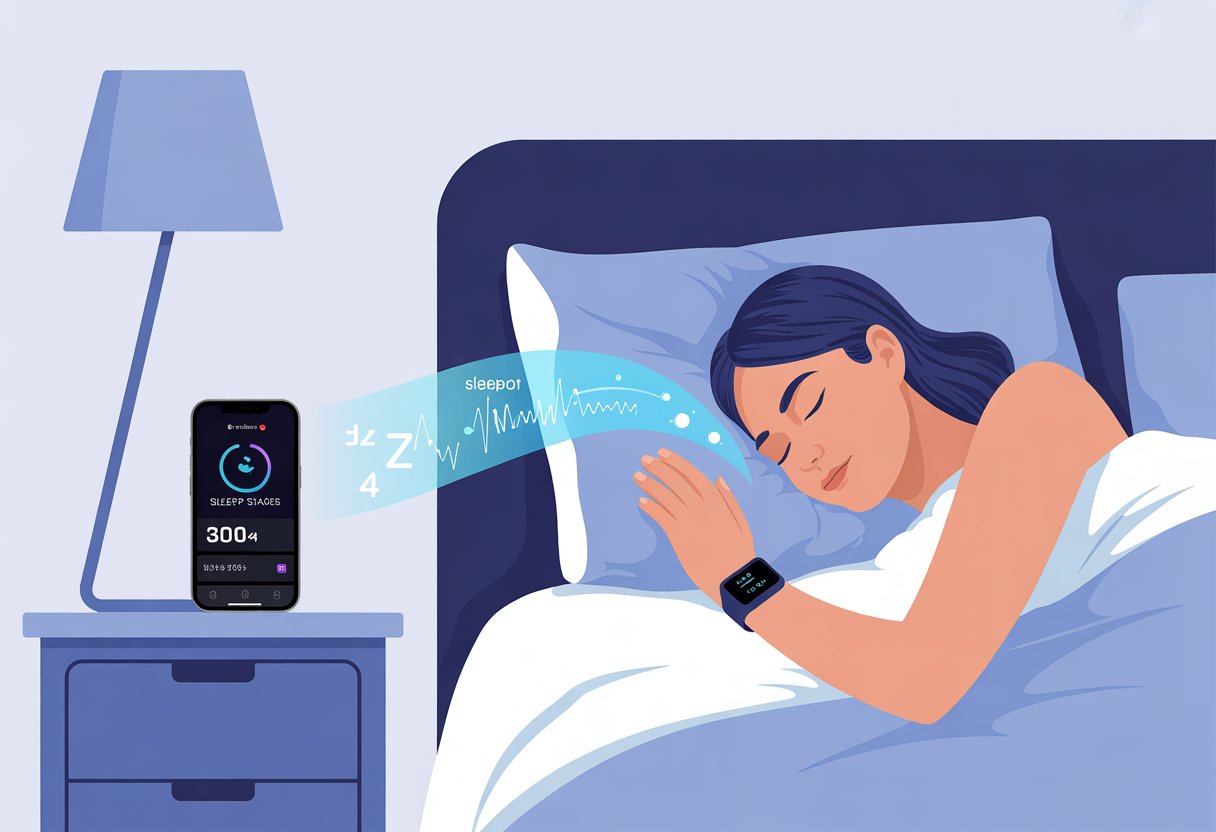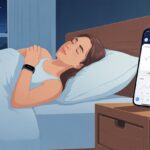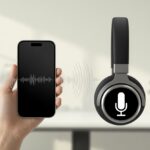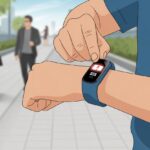Let’s be real—most of us want better sleep, but counting sheep? That only works for so long. Good thing our smartwatches can do a lot more than just nag us to stand up.
We can use a smartwatch to track our sleep patterns, get personalized tips, and set gentle alarms that actually help us wake up feeling refreshed—all without hiring a personal sleep coach or moving to a cabin in the woods.

If you’ve ever wondered what happens after you crash for the night, a smartwatch can show if you’re getting enough deep, light, or REM sleep using its built-in sensors. Some smartwatches suggest wind-down routines, ping you with a reminder to start winding down, and let you see your progress with just a quick glance in the morning.
We probably won’t turn into sleep wizards overnight, but hey, at least our gadgets are cooler than whatever our grandparents had.
The best part? It’s not complicated. With a few taps, we can set goals, tweak habits, and use features like sleep schedules or night modes.
Maybe—just maybe—we’ll stop hitting snooze five times every morning. We can hope, right?
Why Use a Smartwatch for Sleep Improvement?
Everyone wants better sleep, but counting sheep? Yeah, that doesn’t always work. Smartwatches let us actually see what’s happening while we snore, roll over, or drool all over the pillow.
Let’s check out why these little wrist computers are so good at helping us get decent rest.
Benefits of Sleep Tracking
Sleep tracking lets us see our sleep patterns without needing a scientist to watch us at night. Smartwatches measure our movement, heart rate, and sometimes even the room’s environment.
We can spot how much time we spend in light, deep, and REM sleep. That way, we know if that late-night snack sabotaged our dreams again.
Some smartwatches track breathing and blood oxygen too. With this info, we can find bad habits or health issues that mess with our sleep.
Studies even say wearables can improve sleep quality and nudge us toward better sleep habits.
With daily feedback, we can make small tweaks that add up. Maybe we’ll skip that extra coffee at 8 PM or finally figure out why our alarms always wake us mid-dream.
How Smartwatches Outperform Traditional Sleep Monitors
Old-school sleep monitors? They’re bulky, uncomfortable, and sometimes wired to our heads. That’s not exactly bedtime bliss.
Smartwatches are light, wireless, and easy to use. Just wear them like a regular watch, and they handle the rest.
They automatically track our sleep stages and sometimes even check things like noise or light in the room. We get data night after night, no extra effort needed.
Compared to traditional monitors, smartwatches are way less awkward and a lot more convenient. That makes it easier to actually stick with sleep tracking.
We can wear a smartwatch day and night, so we never miss a beat—or a snore. And if it’s waterproof, we even get credit for those poolside naps. No sticky wires, no hassle.
Understanding Sleep Data and Insights
Each morning, our smartwatch gives us a sleep report card. It might show a sleep score, some graphs, and a breakdown of sleep stages like light, deep, and REM.
Some watches even compare our sleep to national averages. That’s a fun way to see how we stack up.
With clear graphs and tips, we can spot trends—like stubborn bedtimes or waking up too often. That gives us real tools to tackle bad sleep habits.
Some smartwatches explain the numbers, showing how things like exercise, stress, or caffeine affect our rest. When we understand our sleep data, we can set goals and actually see progress. For more on how smartwatches improve sleep tracking, check out recent research and guides.
How Smartwatches Track Sleep
Smartwatches quietly turn us into science experiments while we snooze. They watch us through tiny sensors, picking up on our movements and what’s happening inside our bodies.
Sensors and Technologies Used
Honestly, those little gadgets on our wrists are packed with more sensors than you’d expect. The main one is the accelerometer, which tracks how much we move at night.
There’s also the gyroscope—it notices how we twist and turn.
Most smartwatches have optical sensors that use light to scan our skin. Photoplethysmography (PPG) sensors (try saying that three times fast) track our pulse.
Some models check our blood oxygen levels with a separate sensor. Put all this together, and our sleep habits aren’t as mysterious as they used to be.
For more details, there’s info on the sensors inside modern smartwatches.
How Accelerometers and Body Movements Are Measured
While we sleep, our smartwatches watch for every flip, flop, and ninja kick. The accelerometer senses movement in all directions.
It tells the watch when we’re still versus when we’re breakdancing at 3am (hey, it happens).
Here’s the gist:
- Very little movement: Probably deep or light sleep
- Lots of movement: Maybe dreaming, restless, or about to wake up
By watching these movement patterns, the watch guesses when we fall asleep, wake up, and how restless our night was.
Some smartwatches even learn our habits over time and get better at tracking our sleep phases. If you want more, check out movement and sleep tracking.
Using Heart Rate and Blood Oxygen Levels
While we’re dreaming of pizza or running from imaginary monsters, our heart rate and oxygen levels shift around. Smartwatches use the photoplethysmography (PPG) sensor for heart rate and an SpO2 sensor for blood oxygen.
Our heart slows down in deep, restful sleep. During REM, it might speed up again.
Watches track these patterns, adding another layer to sleep tracking.
They also check blood oxygen levels through our skin, which can spot breathing problems overnight. If our oxygen drops, the watch might suggest we talk to a doctor—maybe before blaming our snoring on the dog.
Here’s a guide on heart rate and SpO2 tracking for more info.
Understanding Your Sleep Patterns and Stages
Knowing how we sleep is half the battle to waking up with less regret and more energy. Smartwatches help us track what really happens after we close our eyes: different sleep stages, possible health issues like sleep apnea, and the quality of our rest.
REM, Deep, and Light Sleep Explained
Most smartwatches split our sleep into three acts: light sleep, deep sleep, and REM sleep.
Light sleep is the warm-up. We’re dozing, but the slightest noise can wake us. It takes up the biggest chunk of our night.
Deep sleep is when we’re hardest to wake. Our bodies use this time to fix muscles and boost our immune system.
If you’ve ever woken up drooling into your pillow, deep sleep probably did that.
REM sleep is the “dream factory.” Our brain sorts memories and emotions here.
If your watch reports lots of REM, you’re probably getting the brain tune-up you need.
Smartwatches use sensors to estimate these stages, showing graphs and stats. Here’s a simple guide to the sleep stages tracked by smartwatches.
Identifying Sleep Apnea and Snoring
Smartwatches can sometimes spot if we sound like a chainsaw at night. Many watches have microphones or sensors to listen for snoring and check blood oxygen while we sleep.
Consistent loud snoring or drops in oxygen might mean a bigger problem, like sleep apnea. Sleep apnea makes us stop breathing for a few seconds at a time—not great for beauty rest.
While these devices aren’t doctors, they can warn us if something seems off and suggest we talk to a real professional if the snoring meter breaks.
Regular tracking helps us spot patterns—like whether that extra slice of pizza or sleeping on our back makes us snore louder than usual.
Analyzing Sleep Quality and Duration
Sleep quality isn’t just about hours in bed. Smartwatches add up total sleep time, show how often we wake up, and hand out “sleep scores” to keep us honest.
We can see:
- Total hours asleep
- Time in each stage
- Number of awakenings
- Sleep efficiency (how much of our bedtime was actual sleep)
Some watches even notice naps and restless nights, giving us reports we can quietly judge ourselves by each morning.
Advanced features in Garmin’s sleep tracking and similar devices help us spot long-term trends or see if cutting caffeine at 4 p.m. actually helped.
Choosing the Best Smartwatch or Sleep Tracker
Finding the right sleep tracker is like picking a new sidekick—lots of personality, no snoring. Some devices just track the basics, while others give a full play-by-play of our nightly adventures.
Comparing Top Brands: Apple, Fitbit, Samsung, and More
Let’s be honest, our wrists are drowning in options lately.
If you’re already living in the Apple ecosystem, the Apple Watch just works. It tracks basics like sleep and heart rate and syncs with your iPhone so easily, it almost feels like magic.
Fitbit has a pretty strong reputation for sleep tracking. You’ll get details about light, deep, and REM sleep, and the battery lasts long enough to forget about charging. Some folks on Reddit even say Fitbit’s sleep tracking beats pricier watches, including Garmin’s top shelf watches.
Samsung smartwatches are a solid pick for Android users. They track sleep stages and can even detect snoring. Google’s watches do sleep tracking too, but, uh, battery life isn’t their strong suit.
Here’s what most people actually want:
- Good battery life
- Comfortable fit (nobody wants a brick on their wrist)
- Accurate sleep stage tracking
- Easy-to-read info
Pick something that fits your budget and works with your phone. Who needs more apps than hours of sleep, right?
How Oura Ring, EEG, and Polysomnograph Stack Up
Now, for the folks who are serious—or maybe just obsessed—about sleep. The Oura Ring is like a little spy for your sleep. You barely notice it, but it tracks heart rate, temperature, and sleep stages. Reviewers call it the best sleep tracker for comfort and battery life. Plus, it doesn’t vibrate on your wrist like it’s demanding attention.
If you’re ready to go full sleep scientist, EEG headbands track your brain activity directly. They’re more accurate for sleep stages, but let’s be real—they’re not winning any style points.
The polysomnograph rules in sleep labs. It tracks everything: brain waves, eyes, breathing, all of it. The catch? You’ll be sleeping with a tangle of wires. Not exactly Instagram-worthy.
If you want comfort and decent accuracy, stick to rings or watches. For ultra-precise data (and maybe to impress your sleep doc), try EEG or polysomnography—but good luck getting comfy.
Setting Up Your Smartwatch for Sleep Tracking
Getting your smartwatch ready for sleep tracking can feel like prepping a spaceship—minus the zero gravity. You just need the right tools, a few bedtime settings, and to make sure the sensors are ready so you can actually fall asleep.
Optimizing Sleep Apps and Tools
First, open the main health app on your watch. For Galaxy Watches, it’s Samsung Health. On Apple Watch, look for the Sleep feature in the Watch app.
Make sure your sleep app is installed and updated. Most watches have built-in sleep tracking, but if it feels too basic, check the app store for better options.
Turn on sleep tracking in the settings. Sometimes it hides in the menus, so you might need to poke around. For best results, wear your watch snug—not tight. Loose watches make your data… well, not great. Need more help? Here are some tips for tracking sleep with popular watches.
Configuring Bedtime and Alarm Settings
Setting your bedtime and alarm isn’t just for people who can’t wake up. Your watch needs to know when you plan to sleep.
In the Sleep section of the health app, set your usual bedtime and wake-up time. On Apple Watch, adjust in the Sleep schedules menu. Galaxy Watch users do this in the Samsung Health sleep section.
Choosing an alarm sound matters more than you’d think. Gentle tones, a little vibration, or the classic “BEEPBEEP” are all options. You can customize these to avoid waking up everyone else.
Some alarms only turn off if you move around, so don’t freak out if your watch tries to get you out of bed the hard way.
Enabling Sensors and Microphone Options
Now, dig into the settings to check your sensors. Turn on heart rate, blood oxygen, and movement tracking. Many watches let you measure blood oxygen during sleep—turn it on, especially if you snore like a chainsaw. Here’s how to do it on a Galaxy Watch.
Some watches can use the mic to track snoring or other sounds. If you’re dying to know if you sleep-talk about pizza, enable this. Usually, it’s under “snore detection” or “microphone” in sleep settings.
The better your watch tracks sleep, the more entertaining your breakfast stories get. Just make sure you’re cool with what’s being recorded before turning on the mic.
Using Sleep Data to Improve Your Sleep Habits
Tracking sleep is one thing, but knowing what to do with the numbers is another. If you understand your sleep reports, adjust your routines, and make a few lifestyle tweaks, you might actually wake up feeling decent.
Interpreting Sleep Reports and Scores
Stayed up late watching power-washing videos? Now your smartwatch says you had “fair” sleep. What does that even mean?
Most watches give you a sleep score—just a rough estimate. It adds up things like how long you slept, how much deep or REM sleep, and how often you woke up. According to the New York Times, the score isn’t perfect, so don’t panic over every dip.
Focus on trends. If you’re waking up a lot or your deep sleep keeps shrinking, it’s time to figure out why. The graphs don’t lie, even if your half-awake brain tries to.
Adapting Bedtime Routines Based on Insights
If your sleep data says you’re tossing and turning, it’s probably time for a new routine. Watches can show when you fall asleep, wake up, and whether your schedule is steady.
Use this info to build better bedtime routines. For example:
- Go to bed and wake up at the same time every day.
- Keep the room dark and cool.
- Put the phone down (TikTok will survive without you).
Some apps let you set bedtime reminders. If your graphs look rough after late-night snacks or screen time, you know what to avoid.
Addressing Poor Sleep with Lifestyle Changes
When your sleep tracker serves up bad news, blaming the mattress or the neighbor’s dog is tempting. But usually, it’s on us to change things.
Try small tweaks. If deep sleep is rare, maybe add a bit of exercise—even if it’s just a lap around the kitchen. If you’re waking up a lot, cut back on caffeine. Your watch might also remind you to skip big meals before bed.
If nothing helps, it’s probably time to talk to a doctor. Start with these habits first. Sometimes a couple of changes can keep you from waking up feeling like a raccoon that’s been dumpster diving all night. Let smartwatch sleep tracking guide you, not just your groggy hunches.
Recognizing and Managing Sleep Disorders
Nobody wants to feel like a zombie every morning or wake up feeling worse than before. Paying attention to your sleep can help you spot trouble signs and figure out what to do next.
Tracking Symptoms of Insomnia and Sleep Apnea
If you’ve ever stared at the ceiling all night, you know insomnia isn’t just a fancy word. With a smartwatch, you can track how long it takes to fall asleep and how often you wake up. Most devices show light, deep, and REM sleep.
Sleep apnea is sneakier. Smartwatches pick up clues by monitoring oxygen levels, heart rate, and breathing. Some even flag possible breathing pauses. This makes it easier to spot red flags before your snoring wakes up the whole house—or the dog bails on you. For more on how wearables help track warning signs, see this guide to detecting sleep apnea with smartwatches.
Quick Tips For Tracking:
- Review your data every morning
- Set sleep goals
- Look for big drops in sleep quality
- Watch for repeated wake-ups
- Note how you feel in the morning
When to Consult with a Health Professional
Sometimes DIY tracking just doesn’t cut it—like when you keep nodding off in meetings, or your watch keeps warning you about weird breathing. If your device keeps showing short sleep, lots of wake-ups, or odd oxygen levels, it’s time to get help.
Don’t ignore a pattern of restless nights or constant tiredness. Bring your sleep data to a doctor—they’ll see the big picture. They might recommend a sleep study or suggest treatments for insomnia or apnea. Use resources like the Johns Hopkins Medicine guide on sleep trackers to better understand your data.
If your dreams are just alarm clocks and endless emails, talk to a real human—preferably one with an MD, not just a bossy smartwatch.
Optimizing Your Sleep Environment
The space where you sleep matters almost as much as how long you sleep. Your surroundings—light, noise, temperature—can make or break your rest. Thankfully, you can use smartwatches to help you get the sleep you deserve.
How Environmental Factors Influence Sleep
Great sleep isn’t just about having the fluffiest pillow (though that’s nice). Light, especially from screens, tricks your brain into thinking it’s daytime—even at 2 a.m. Noise can yank you out of deep sleep faster than a cat on a mission. And temperature? If your room is a sauna or an icebox, you’re almost guaranteed to wake up grumpy.
Here’s how the main factors stack up:
| Environmental Factor | Why It Matters | Sleep Tip |
|---|---|---|
| Light | Messes with melatonin | Use blackout curtains |
| Noise | Causes brief waking | Try earplugs or white noise |
| Temperature | Overheats or chills us | Set thermostat around 65°F/18°C |
Even your mattress and bedding make a difference. Experts say a supportive mattress and clean sheets help. Small changes in your space can mean fewer interruptions and much better sleep.
Smartwatch Features for Improving Sleep Setting
Smartwatches these days do a lot more than just buzz when a text comes in at 1 a.m. They actually track things like movement, heart rate, noise levels, and even temperature to spot environmental issues.
Some watches come with gentle vibration alarms, which is a relief if you hate those blaring alarms that jolt you out of sleep.
You can get feedback on your sleep patterns right on your wrist. If your watch keeps noticing disruptions when your room heats up, maybe it’s time to ditch that heavy quilt.
A few models even listen for noise in your bedroom. They’ll let you know if snoring—yours or someone else’s—is wrecking your REM.
Want to dig deeper into using tech for better sleep? There’s some advice on maximizing sleep quality with smartwatch tools at spadeandco.com/blogs/news/how-to-maximize-your-sleep-quality-with-smartwatch-sleep-tracking.
If you actually pay attention to your watch’s data, you can tweak your environment and turn your bed into the best spot to recharge. Now, if only these watches could make coffee in the morning, wouldn’t that be perfect?
Maximizing Results with Heart Rate Variability Tracking
Let’s talk HRV—heart rate variability. Nothing says “I take my sleep seriously” like tracking those tiny changes between heartbeats, right? HRV might sound like something only astronauts care about, but honestly, most of us can check it on our smartwatches without much effort.
So, why bother with HRV? Basically, a high HRV usually means our bodies are handling stress and bouncing back well. If it drops, our bodies could be quietly begging us for a break.
Here’s how we can actually use those HRV numbers:
- Notice Patterns: We look for regular dips in HRV. If we see our scores dropping night after night, maybe it’s time to rethink that late-night TV binge.
- Track Recovery: After a tough workout, we check our HRV. If it still reads low the next morning, that’s a solid excuse to skip the HIIT class (future us will appreciate it).
- Adjust Our Routine: If HRV keeps improving, maybe our new wind-down routine is actually doing something.
Some smartwatches even toss out stress-reduction tips when HRV drops—like deep breathing or, let’s be honest, pretending to meditate but really just lying there hoping we don’t fall asleep too fast. These suggestions pop up right on our wrists, so we don’t have to start Googling stress hacks at 2 AM.
If you want to get a bit fancier, you can pick wearables that monitor HRV throughout the night. That way, we get a better sense of how our stress and rest habits mess with our sleep.
Curious? You can always dig deeper into HRV and smartwatches if you’re in the mood for a little more science.
- Why is my fitness tracker not pairing with Apple Health? Troubleshooting for Technologically Cursed Mortals - December 22, 2025
- Why is my fitness tracker not updating firmware? Tech Tantrums and Update Woes Explained - December 21, 2025
- Why is the Sound Quality on My Bluetooth Headphones Poor? It’s Not Just Bad Music Taste! - December 21, 2025






